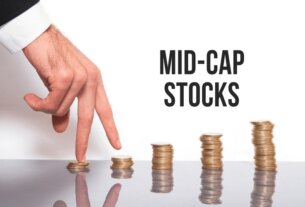Last Updated on 06/12/2020 by Deepak Singla
Leading a financially secure and independent life after retirement is something almost everyone hopes for. However, with the ever-rising rate of inflation, maintaining a comfortable standard of living is something that may seem challenging for many.
Even with enough savings, you’ll need a regular source of income to meet your needs, especially in the absence of your monthly salary. To ensure your financial freedom after your retirement, it’s important to plan your pension and retirement funds.
Planning your pension and retirement funds can be overwhelming, especially if you don’t have knowledge about financial planning. That’s why it’s important to consult a knowledgeable financial advisor who can help you efficiently plan your retirement funds.
In this article, we discuss six top things you should know about pensions and retirement funds that’ll help you grow and manage your money. This way, you’re financially secure when you retire.
1. Retirement Funds Provide You With A Regular Income After Retirement
The first step to a successful retirement plan is to understand the nature of retirement funds and how they can provide you financial freedom in your retirement years.
Retirement funds are investments that help you save a portion of the salary that you get from your job. These funds give you a steady source of income even before you retire. As a retiring employee, you receive a monthly annuity for your investment during your retirement, and you’re not required to pay any amount to the pension fund for your entire life span.
Most companies offer their employees retirement packages. Additionally, there are various self-directed individual retirement accounts (IRAs) that are designed to help individuals save for your retirement, such as those offered by banks and insurance companies. If you want advice on financial planning, visit robo advisor. What is a robo advisor? It’s a specialized software that does the work of financial advisors.
One of the best ways of managing retirement funds is by investing in some annuity plans. These are usually managed by a financial expert who’s a member of an insurance company and holds an active license. Annuity plans pay a fixed monthly amount to the beneficiary over a period of time. This way, a person can be assured of regular monthly income, allowing them not to worry about the future.
2. An Annuity Plan Gives You Regular Income Until Your Death
A pension plan starts from the time you buy the plan until you retire. The period in between is called the accumulation phase in which you’ll be paying regular premiums. These premiums will further get invested by investment managers. When you retire, you can withdraw about a third of the total accumulated amount, which will be tax-free.
However, the rest of the amount cannot be withdrawn and has to be used to buy an annuity plan. This annuity plan provides you with regular income until your death. The pension received from this plan is taxable and is based on the rate of interest at that particular time.
There are a lot of benefits to having annuity plans. The biggest benefit is that when you retire, you’ll be able to live on the money you’ve made throughout your lifetime. Another benefit is that the money you have will never go to waste. Instead of paying taxes on your regular income, the money can be used for your children’s education, travel expenses, or for other purposes. Essentially, annuities give you control over the amount you get paid.
3. Employer-Sponsored Retirement Plans Offer Several Benefits
A retirement fund is set up by a company as an investment for the employee, typically from the moment of that they work until they reach the end of their working years. In most countries, the term refers to any form of pension scheme that provides monthly payments to retired workers.
The contributions that are made by a worker to the fund are taken from their regular salary. This money accumulates over time and grows into a fixed amount, which is paid out each month in addition to the salary that’s received from the employer.
Retirement funds can offer several benefits. One of the benefits of having a retirement fund sponsored by your employer is that it can be invested in a wide range of assets, including shares, bonds, and stocks, depending on the type of funds chosen. Since the money is taken monthly from your paycheck, it’s easy to save it. As most employers match a portion of the employee contribution, you may actually end up making more money. The employer-sponsored retirement plan helps you save at least three times more than the regular retirement plan due to the tax benefits that come along with it.
Some employers also prefer to have their employees invest a percentage of their salary in a separate account, which will then accumulate interest without having to be included in the fund itself.
4. Diversification Through Target Date Funds
Pension plans and many retirement funds are long term contracts that are not easy to exit. Unlike mutual funds that have a large portfolio, pension plans are restricted in investment options.
If you’re looking for retirement funds that can be diversified into several investment options, the target date funds, like the Vanguard Targeted Retirement Fund, may be an option. The way a target date fund works are simple. You put as much money you want in it in the beginning and then forget about it until your retirement.
There are several target-date retirement fund investments, including stocks, bonds, real estate, international currencies, and money market instruments. This allows you to have a diversified portfolio and build on it as you grow older.
In addition to their flexibility, the target funds are designed with two main goals in mind: lower costs and greater returns. While all of their mutual fund investments are considered riskier than the average portfolio, their cost-effectiveness is unmatched by any other fund type.
5. Pension Plans And Taxation
Taxation is one of the biggest problems that plague a pension plan. If you’re receiving a pension or are eligible for the employee retirement plan, some amount of what you receive is taxable. If you have no investments in the account, the pension amount or annuity amounts are fully taxable. This means that some part of your income will be spent on taxes.
However, by opting for several other investment options, you can have a more tax-efficient investment portfolio.
6. Choosing Between Traditional And Roth IRAs

Most main types of retirement investment accounts come in two types of IRA: the traditional IRA and Roth IRA. When choosing an IRA, you should take into account the key differences between these two IRAs.
The main difference between them is how taxes work. In the traditional IRA, you’ll have to pay taxes when you withdraw money from the account after retirement. While in Roth IRA, the account is funded in pre-tax dollars. This means that there’s no tax on the withdrawals after retirement.
To choose between traditional and Roth IRA, you simply have to anticipate if the tax rate will lower or higher than what it is right now. If you anticipate that the tax rates are lower right now, then the Roth IRA will be beneficial for you as you pay taxes on the money going into your account and all the future withdrawals upon retirement are tax-free.
The IRA tax advantages are clear. However, it’s important to note that there are restrictions that may apply. There are restrictions on how much money you can save. You cannot use your contributions to invest for more than five years in your IRAs. You must also pay taxes on the income from your IRAs.
Conclusion
Some of the best pension plans and retirement funds are those that come with the least amount of risk to the investor and maximum gain. Many investors are now shifting their focus to investing in mutual funds that bear high risk but guarantee very high returns to the tax-free, low-risk, or tax-deductible funds that come in the least amount of risk. Thus, the most effective way to select the right fund is to do your own research about the companies or funds. This way, you’re able to make an informed decision. You may also seek advice from an experienced and reputable financial advisor.
It’s important to know your financial needs and be realistic about your savings rate of return. In addition to that, the more you diversify your portfolio, the better your chances of earning higher returns on investment. Diversification in the form of investment–in both stocks and mutual funds–is considered to be good as it may bring maximum benefit.
For maximum profit, you may opt for tax Saving Mutual Funds that offer various advantages. Some of the advantages of these funds are that they save your taxes and there’s no need to pay any income tax or any taxes on your invested money. You can also access your money without any hassle and withdraw your funds when you need it.



